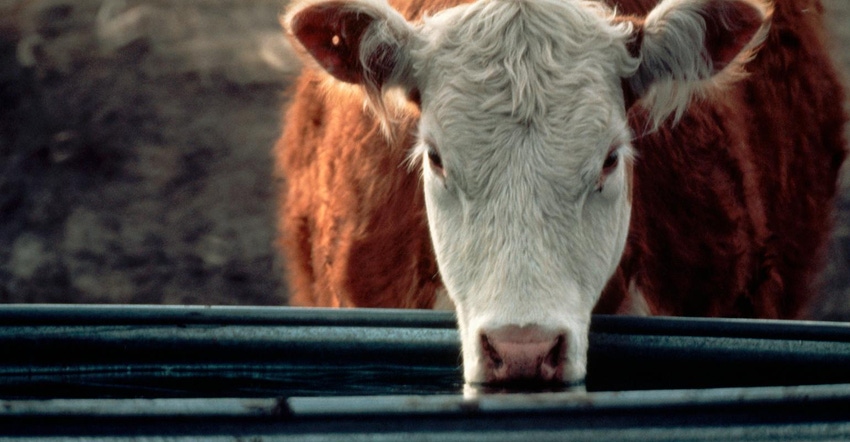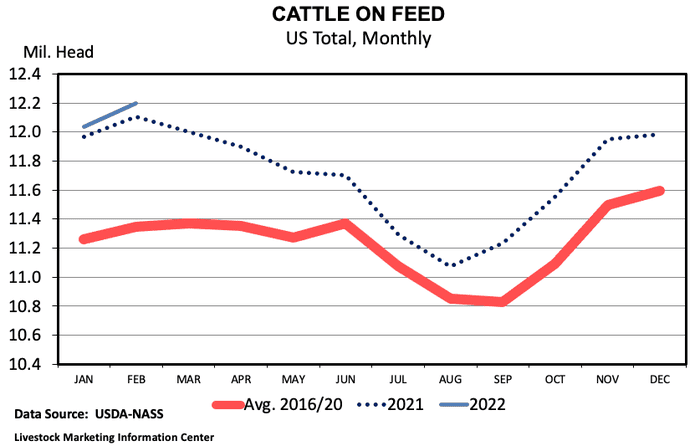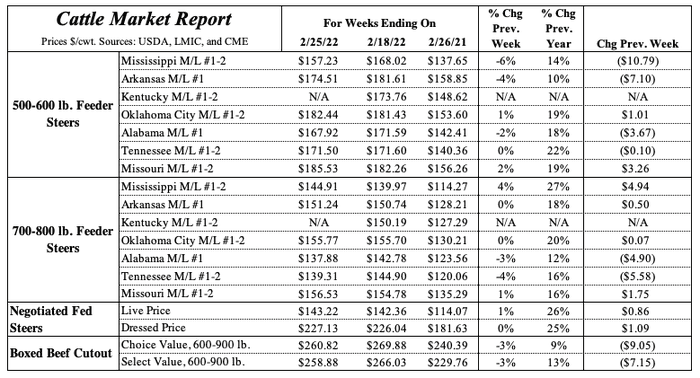The industry continues to make progress working through large cattle supplies.
March 2, 2022

The latest Cattle on Feed report was released last Friday and included a February 1, 2022 cattle on feed inventory of 12.2 million head. All of the estimates from last week’s report were within the range of pre-report expectations (on feed, placements, and marketings). While there were no major surprises last Friday, February’s cattle on feed total was a record high.

The industry continues to make progress working through large cattle supplies. However, the historical 12-month moving average for cattle on feed inventories shows that cattle numbers are still considerably higher by historical standards (Figure 2 below). In 2021, cattle on feed inventories averaged 11.7 million head, a 1% increase from the 2020 average. Since early 2019, feedlot inventories have consistently averaged above 11.5 million head. The only other time this has happened was for a brief period in late 2006.

The January cattle inventory report confirms that tighter supplies are coming. The extent to which those tighter supplies are realized throughout the beef supply chain will, in part, depend on what feedlots do this year (marketings and placements). January 2022 fed cattle marketings totaled 1.8 million head, down 3% from the prior year. Last month, the Omicron variant was a significant challenge for cattle processing, which showed up in last week’s COF report. However, the most recent slaughter shows that we have largely worked through those issues.
January feedlot placements totaled 2 million head, down 1% from the prior year. Placements of cattle weighing more than 700 pounds declined 3%. Declines in placements of heavier feeder cattle were mostly offset by larger placements of cattle weighing less than 700 pounds. For cattle in the lighter weight categories, placements were 2% higher. Deteriorating winter pasture conditions and improving January cattle prices might have pushed some lightweight cattle into feedlots earlier than usual.
The Markets
Feeder cattle markets were mixed last week. Fed cattle markets averaged $1 higher. Both live and feeder cattle futures were down.


Pasture Conditions
Dry conditions have expanded further into the Southeast in recent weeks. In Arkansas, south of the River Valley, drought conditions continue to expand with some areas in the extreme drought category.

Source:James Mitchell, University of Arkansas, which is solely responsible for the information provided and is wholly owned by the source. Informa Business Media and all its subsidiaries are not responsible for any of the content contained in this information asset.
You May Also Like



